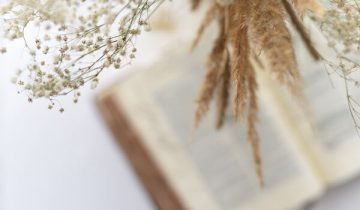Written by Jana Kaddoura
Edited by CHIQIO
Keywords: perfume creation, fragrance inspiration, natural elements, cultural influences, personal experiences
Meta description: Explore the art of perfume creation with insights into natural elements, cultural influences, and personal experiences that inspire perfumers. Discover how ‘noses’ craft unique scents that evoke memories and emotions.
Perfumery is a creative and chemistry-based art form, and perfumers, often referred to as ‘noses,’ are the creators behind the scents that evoke memories, emotions, and experiences. The process of finding the right inspiration is just as crucial as the act of blending the perfume itself. This article explores the best materials that serve as inspiration for perfume creation, honouring the role of perfumers as creators.
Natural Elements: The Basis of Perfume Creation
Nature provides a large and diverse palette of scents to inspire every perfumer. The various flora, wildlife, and environments allow for limitless aroma combinations.
❖ Flowers: Their unique and captivating scents are at the heart of many perfumes. The deep aroma of roses, the exotic charm of jasmine, and the gentle fragrance of lilies are all popular choices. Each flower offers a distinct and intriguing scent experience, often captured using essential oils or absolutes.
❖ Fruits: Citrus fruits such as bergamot, lemon, and grapefruit add a fresh and stimulating touch to the scent. Tropical fruits like mango and pineapple have a sweeter, more exotic aroma. ❖ Herbs & spices: Basil, rosemary, and thyme, as well as cinnamon, clove, and cardamom, lend depth and richness to smells.
❖ Resins and Woods: Earthy components like sandalwood, cedarwood, and amber give many scents a warm, grounding foundation. Resins such as frankincense and myrrh have a deep, balsamic quality.
(Arabian Fragrance Notes, Medium.com)
Cultural Influences: A Global Palette.
Travel and exposure to diverse cultures have an important influence on perfume production. Each location has distinct scents and materials that can be incorporated into perfumes.
❖ Middle Eastern Scents: The Middle East is known for its rich, sumptuous smells. Many traditional perfumes include ingredients such as oud, saffron, and rosewater.
❖ Asian Aromas: Asia has many exotic components, like green tea, bamboo, and yuzu. Popular scents include cherry blossoms, which are delicate and refreshing, and sandalwood, which is peaceful.
❖ European Elegance: European influences include Provence’s lavender fields, Italy’s citrus orchards, and Eastern Europe’s woodlands. Ingredients like lavender, bergamot, and vetiver are frequently employed.
( Shakila Ajmal, Dawn.com)
Personal Experiences: Memory and Emotion.
Perfumers might draw inspiration from their memories and feelings. A perfume can conjure a certain moment in time or emotion, making it a uniquely personal creation.
❖ Childhood Memories: The smell of a childhood house, a favourite meal, or a blooming garden can inspire a fragrance. These nostalgic scents frequently have a strong emotional impact on people.
❖ Weddings, trips, and other big life events can inspire. The scent of the ocean from a beach vacation, the fragrance of flowers at a wedding, or the aroma of spices from a market visit can all be captured in perfume.
❖ Emotional States: Perfumes can be tailored to elicit or enhance specific emotions. A soothing lavender perfume can aid relaxation, but a zesty citrus scent can energize and uplift.
(Eric Wayne, Artofericwayne.com)
Artistic Inspiration: Cross-Disciplinary Creativity
Perfumers can find plenty of inspiration in art, music, and literature. These creative fields provide distinct viewpoints that can be transformed into olfactory experiences.
❖ Visual Arts: The colours and textures of an artwork might inspire the creation of a scent. The strong, vibrant colours of Van Gogh or the gentle pastels of Monet can affect the ingredients used in a fragrance and its overall mood.
❖ Literary Works: Literature contains precise descriptions of scents and locations that can pique the imagination. A perfumer may develop a fragrance inspired by the moors of “Wuthering Heights” or the gardens of “Alice in Wonderland.”
❖ Music: Fragrances can capture the rhythm and mood of music. A dynamic, enthusiastic tune may generate a bright, zesty perfume, while a peaceful, melodic piece may produce a warm, woody fragrance.
Conclusion
The craft of perfumery is a journey of discovery and inspiration. Perfumers can create very personal smells by combining various ingredients and experiences. Perfume inspiration comes from various sources, including the natural environment, cultural influences, personal recollections, and artistic manifestations.
Whether you are a perfumer or a scent aficionado, recognizing these sources of inspiration will help you appreciate the art and science of perfume creation. Accept the variety of inspirations and allow your senses to lead you to new and exciting olfactory experiences.

 No products in the cart.
No products in the cart.